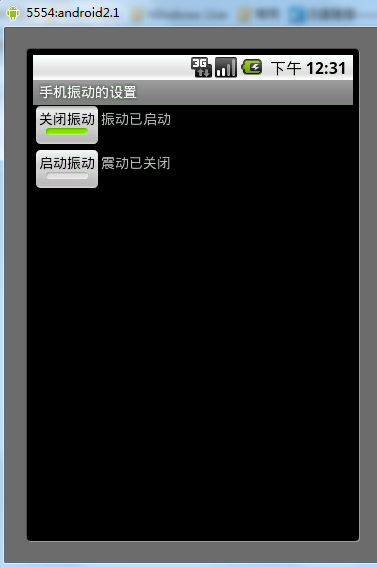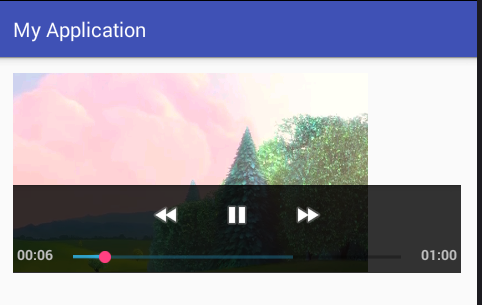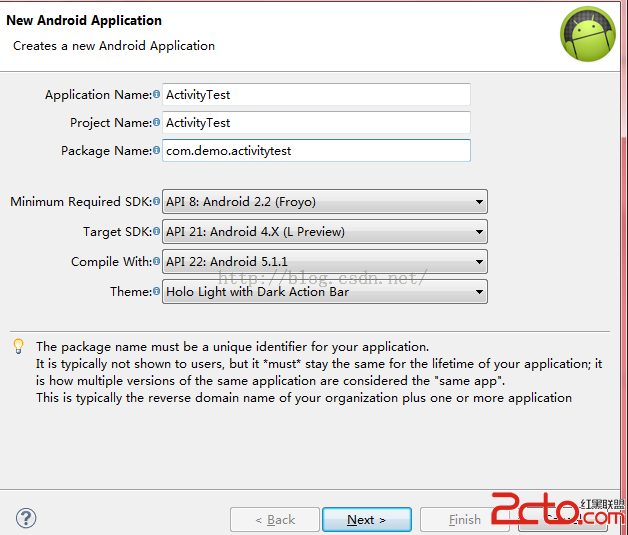編輯:關於Android編程
本文實例講述了Android實現手機振動設置的方法。分享給大家供大家參考。具體如下:
main.xml布局文件:
<?xml version="1.0" encoding="utf-8"?>
<LinearLayout xmlns:android="http://schemas.android.com/apk/res/android"
android:orientation="vertical" android:layout_width="fill_parent"
android:layout_height="fill_parent">
<LinearLayout android:orientation="horizontal"
android:layout_width="fill_parent"
android:layout_height="wrap_content">
<ToggleButton android:id="@+id/tb1"
android:textOn="關閉振動"
android:textOff="啟動振動"
android:checked="false"
android:layout_width="wrap_content"
android:layout_height="wrap_content" />
<TextView android:id="@+id/tv1"
android:text="振動已關閉"
android:layout_width="wrap_content"
android:layout_height="wrap_content" />
</LinearLayout>
<LinearLayout android:orientation="horizontal"
android:layout_width="fill_parent"
android:layout_height="wrap_content">
<ToggleButton android:id="@+id/tb2"
android:textOn="關閉振動"
android:textOff="啟動振動"
android:checked="false"
android:layout_width="wrap_content"
android:layout_height="wrap_content" />
<TextView android:id="@+id/tv2"
android:text="振動已關閉"
android:layout_width="wrap_content"
android:layout_height="wrap_content" />
</LinearLayout>
</LinearLayout>
清單文件:
<?xml version="1.0" encoding="utf-8"?>
<manifest xmlns:android="http://schemas.android.com/apk/res/android"
package="com.ljq.activity" android:versionCode="1"
android:versionName="1.0">
<application android:icon="@drawable/icon"
android:label="@string/app_name">
<activity android:name=".VibrateActivity"
android:label="@string/app_name">
<intent-filter>
<action android:name="android.intent.action.MAIN" />
<category
android:name="android.intent.category.LAUNCHER" />
</intent-filter>
</activity>
</application>
<uses-sdk android:minSdkVersion="7" />
<!-- 設置手機震動權限 -->
<uses-permission android:name="android.permission.VIBRATE" />
</manifest>
VibrateActivity類:
package com.ljq.activity;
import android.app.Activity;
import android.app.Service;
import android.os.Bundle;
import android.os.Vibrator;
import android.widget.CompoundButton;
import android.widget.TextView;
import android.widget.ToggleButton;
import android.widget.CompoundButton.OnCheckedChangeListener;
public class VibrateActivity extends Activity {
private Vibrator vibrator=null;
private ToggleButton tb1=null, tb2=null;
private TextView tv1=null, tv2=null;
@Override
public void onCreate(Bundle savedInstanceState) {
super.onCreate(savedInstanceState);
setContentView(R.layout.main);
//注意模擬器是模擬不了震動的,得真機測試哦
//創建vibrator對象
vibrator=(Vibrator)getSystemService(Service.VIBRATOR_SERVICE);
tv1=(TextView)findViewById(R.id.tv1);
tv2=(TextView)findViewById(R.id.tv2);
tb1=(ToggleButton)findViewById(R.id.tb1);
tb2=(ToggleButton)findViewById(R.id.tb2);
tb1.setOnCheckedChangeListener(listener);
tb2.setOnCheckedChangeListener(listener);
}
OnCheckedChangeListener listener=new OnCheckedChangeListener(){
public void onCheckedChanged(CompoundButton buttonView, boolean isChecked) {
ToggleButton toggleButton=(ToggleButton)buttonView;
switch (toggleButton.getId()) {
case R.id.tb1:
if(isChecked){
//根據指定的模式進行震動
//第一個參數:該數組中第一個元素是等待多長的時間才啟動震動,
//之後將會是開啟和關閉震動的持續時間,單位為毫秒
//第二個參數:重復震動時在pattern中的索引,如果設置為-1則表示不重復震動
vibrator.vibrate(new long[]{1000,50,50,100,50}, -1);
tv1.setText("振動已啟動");
}else {
//關閉震動
vibrator.cancel();
tv1.setText("震動已關閉");
}
break;
case R.id.tb2:
if(isChecked){
//啟動震動,並持續指定的時間
vibrator.vibrate(3500);
tv2.setText("振動已啟動");
}else {
//關閉啟動
vibrator.cancel();
tv2.setText("震動已關閉");
}
break;
}
}
};
}
運行結果:

希望本文所述對大家的Android程序設計有所幫助。
 如何用Sencha Touch打包Android的APK
如何用Sencha Touch打包Android的APK
什麼是Sencha Touch前不久基於JavaScript編寫的Ajax框架ExtJS,將現有的ExtJS整合JQTouch、Rapha?l庫,推出適用於最前沿Touc
 Android使用VideoView播放本地視頻和網絡視頻的方法
Android使用VideoView播放本地視頻和網絡視頻的方法
1、效果展示2、布局文件<?xml version=1.0 encoding=utf-8?><RelativeLayout xmlns:
 Android 四大組件學習之Activity一
Android 四大組件學習之Activity一
Activity是Android四大組件中最基礎也是最常用的組件之一。Activity作為一個應用程序組件,提供了一個與用戶交互的界面。可以這麼說Activity是和用戶
 Android仿京東首頁畫軸效果
Android仿京東首頁畫軸效果
記得之前京東首頁有一個效果,有一個畫軸,然後可以滾動畫軸,去打開畫(不知道怎麼去形容這個效果,就叫做畫軸效果吧- -!),然後去做相關操作,剛開始看到這個效果,想法是動態